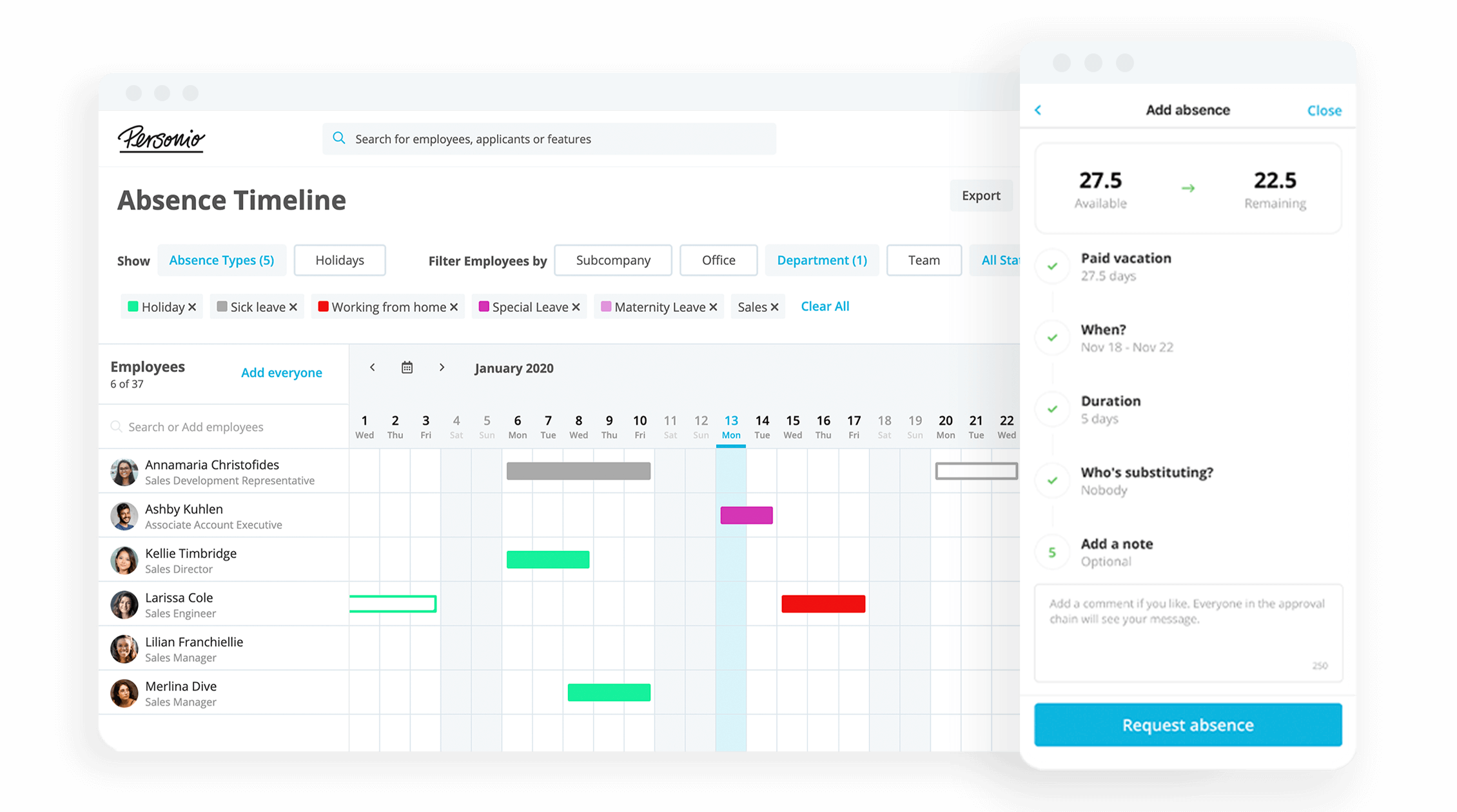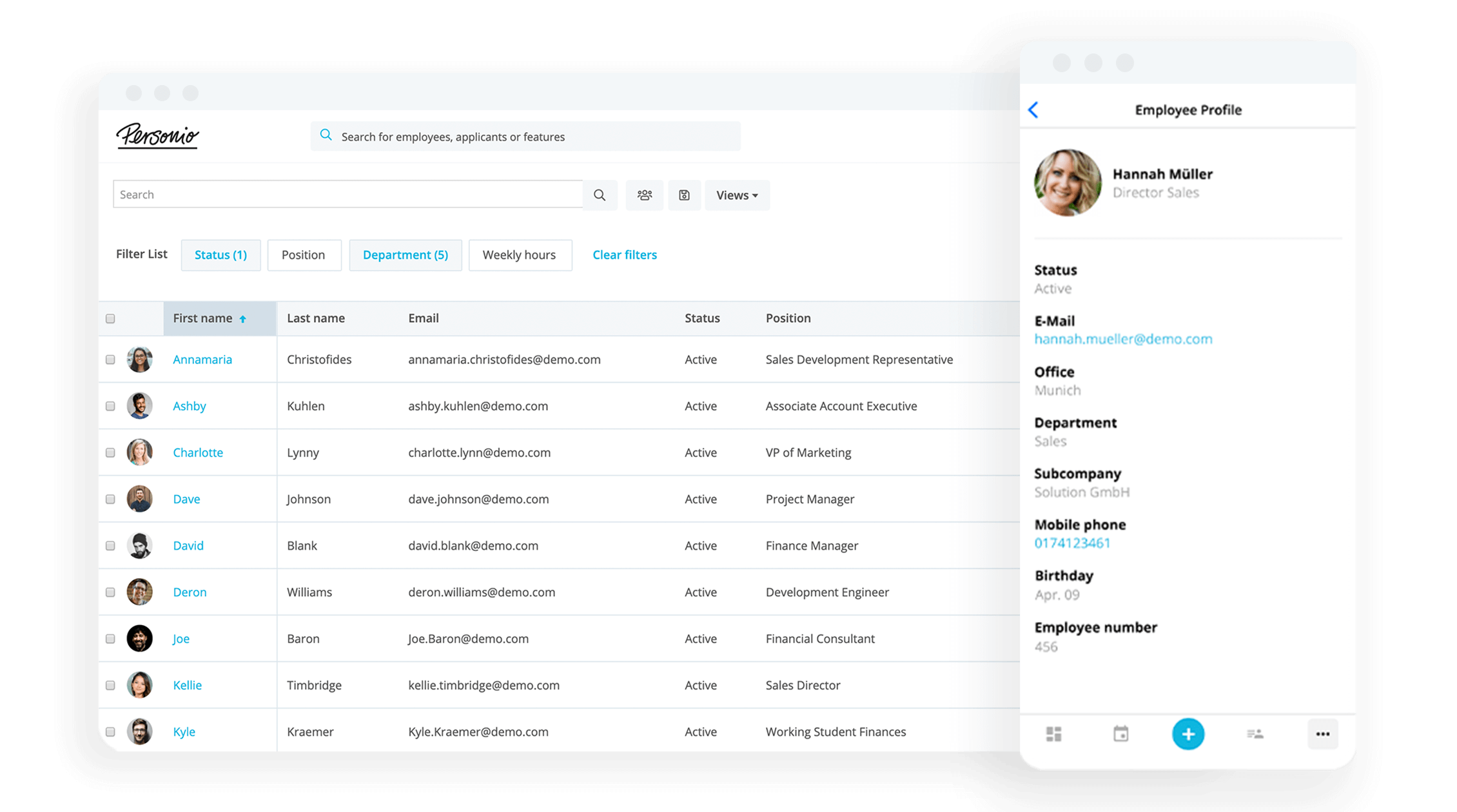13 Types of Leave From Work & How They're Defined

Types of leave in the UK can range from taking a day due to a runny nose, to pursuing a passion during a "career break" or sabbatical. There's a whole world of options, which means there’s also plenty for HR to do when it comes to keeping track of them all!
What Is Leave From Work?
Leave is the time that employees take off work during otherwise normal working hours which they are entitled to, by law, or by contract. The thing to know is that leave comes in various forms and various levels of entitlement.
How Many Types Of Leave Are There?
It depends on the company! Companies can determine how generous they want to be with types of leave — but they must also provide the minimum requirements required by law.
Some companies may choose to offer additional types of leave as part of their employee benefits, which can be a great incentive for employees. Sometimes, employees are given additional leave after having worked for the company for some time (an incentive for loyalty).
What Are The Main Types Of Leave?
Discover the various types of leave available to employees in the UK, when people are entitled to them, and how much leave they have taken below.
Leave Type | Defined |
|---|---|
Annual Leave (Holiday Entitlement) | A set amount of time an employee is legally entitled to leave work. |
Bank Holidays | A day off denoted by a holiday (whether on the day or carried over from the weekend). |
Casual Leave | A general term including all holidays or annual leave, other than mandatory/legally-defined or statutory leave. |
Compassionate Leave (Bereavement Leave) | Leave for an employee to accommodate the loss of a family member (or other emergencies/life changes). |
Duvet Day | A day afforded to employees for them to rest and relax (maybe also referred to as a self-care or mental health day). |
Gardening Leave | Leave taken when an employee quits and their employer doesn't want them to return to work during their notice period. |
Maternity Leave (Parental Leave) | Leave that occurs when a family has a newborn child (leave taken either before or after the birth, or both). |
Paid Time Off (PTO) | As part of statutory leave, this is leave that is compensated with pay as though the employee worked as normal. |
Sabbatical Leave | A leave type where an employee can take time off to pursue a passion, volunteer, or partake in some kind of project. |
Sick Leave | Leave that is taken when an employee falls ill, whether for a day, weeks, or months depending on the severity of the illness. |
Time Off In Lieu (TOIL) Leave | Giving people time off for extra work that they’ve done (above their contracted hours). |
Unpaid Leave | Employees can take unpaid leave, which can be deducted from their salary if they have run out of other types of leave. |
Miscellaneous Leave | All other forms of leave that may not fit in the above list are classified as miscellaneous leave. |
In the UK, employees are entitled to 5.6 weeks of paid holiday each year, pro-rata, including bank holidays. The more hours they work, the more holidays they are entitled to. Workers also earn holiday pay while on furlough. However, people in the UK cannot be paid out for leave unless they leave their job.
Bank Holidays
The UK has approximately eight public or bank holidays each year. Occasionally, an extra bank holiday is granted, for example, on the Queen’s Jubilee.
UK bank holidays occur on New Year’s Day, Good Friday, Easter Monday, Christmas Day and Boxing Day, early May bank holiday, spring bank holiday, and summer bank holiday.
According to gov.uk a bank holiday that falls on a weekend isn’t lost. Instead, a ‘substitute’ weekday becomes a bank holiday, normally on the following Monday.
Casual Leave
This term is not commonly used in the UK. In other countries, casual leave is a general term including all holidays or annual leave, other than mandatory/legally-defined or statutory leave.
Every Type of Absence, Across Your Organization

Personio offers a single source for every type of employee absence. Log, track, and report on employee absences in an instance — all from one place. Click below to see how absences work with our HR software.
Easily Track Absences With PersonioWhen someone close to an employee dies, they are entitled to ‘a reasonable amount’ of leave. The rules are generally murky, however, an employee who has lost a child is entitled to two weeks of statutory parental bereavement leave.
You can give more compassionate leave, if you choose, as long as you let your employee return to their job after taking compassionate leave. Helping them with a phased return to work can also ease them back into their job after a trauma.
Some employers allow their staff to take a duvet day to rest and recuperate when they need it most. Unlike other types of holidays that have to be agreed upon in advance, duvet days form part of an annual holiday allowance but can be taken whenever an employee chooses.
Someone who resigns, quits, or is asked to leave, might be paid garden leave when an employer doesn’t want or doesn’t need the employee to return to the office. It’s often used when people leave to work for a competitor or there are privacy or security concerns if they continue having access to the company’s systems or offices.
Click here for our complete guide to gardening leave.
Mothers are required to take four weeks’ leave after their baby is born. Beyond that, maternity or shared parental leave can last up to one year but is paid differently for the first 26 weeks and the second 26 weeks. Keep in mind, though, that there are other legal requirements (including notice periods) and employee rights at play.
Two types of leave, vacation, or time off of work are available: paid and unpaid time off. Workers are legally entitled to paid time off and HR should document this in a paid time off policy to clarify when people can take time off, how much they can take, and under what circumstances.
Here are all the essential elements of a great PTO policy.
Also known as ‘long leave’ or ‘career break’, a sabbatical is granted when employees take extended time off work but can return to their job once they’re done. Sabbaticals can be paid or unpaid. Ultimately, allowing sabbaticals (or developing a policy around them) can mean a boost for your organisation.
Unwell employees are permitted to take paid sick leave in the UK. Generous leave policies may allow employees to take more time off when they’re sick, but every employee must be paid at least the minimum Statutory Sick Pay (SSP) amount if they have been sick for more than three days.
Giving people time off for extra work that they’ve done (above their contracted hours) is called time off in lieu (or TOIL). Some employers provide TOIL instead of paying more for overtime.
How does TOIL work? Check out our guide for the full read.
Employees can take unpaid leave, which can be deducted from their salary if they have run out of other types of leave. Employees might take unpaid leave to study, attend a medical appointment, undergo training, do jury service, or simply because they request (and the company/manager) agrees to it.
Miscellaneous Leave
Employers must allow their employees time off work to attend jury service or work as a voluntary magistrate. You can decide whether this is paid or unpaid (but make sure this is covered in every employee’s contract of employment).
Start Tracking Types Of Leave For Free

Get familiar with Personio’s absence tracking solution and find out if it’s the right one for you during a 14-day free trial. Click the button below to start tracking types of leave today.
Start Your Free Trial Of PersonioWhich Types Of Leave Should You Include In Your Absence Policy?
In short, all of them. If in doubt, err on the side of caution and cover as many types of leave as possible in your absence policy (be sure to stay if some types of leave are not permitted). You can, of course, change your policy over time, as company circumstances change. You must change your absence policy when laws change.
How Can HR Software Keep Track Of Types Of Leave?
Given the sheer amount of absence types, how do you keep track of them all while still prizing employee data and accuracy? The answer may be found in an employee holiday tracker as part of an HR software.
Personio, for instance, offers a calendar view of all the types of leaves, when employees are in the office, when they’re not, and which types of leaves are being taken at any given moment.
In addition, your company can even define unique types of leave (like a duvet day or a self-care day) that can be tracked from the comfort of Personio’s dashboard.
Finally, your team can also instantly generate reports on leave. You can track it across departments, and build an accurate picture of potential absenteeism in your org.
Let employees record their working times with a click, and request leave almost as easily, so you can manage them effectively and painlessly. Click the button below to find out more.
Do You Have A Leave Management System?
The world of work is only becoming more complex. The last thing you should be worrying about is calculating holiday entitlements, tracking them or ensuring you are legally compliant. Allow us to help.
Personio is an all-in-one HR software that helps upgrade your people operations for now and the future. That includes a leave management software that can manage holiday requests, track every kind of leave (from emergencies to sicknesses and bank holidays) alongside all of your other core HR processes.
8,000+ customers in the UK and Europe trust us to help. Get in touch with one of our helpful HR experts today, or start your own free trial to give Personio a go right away.

